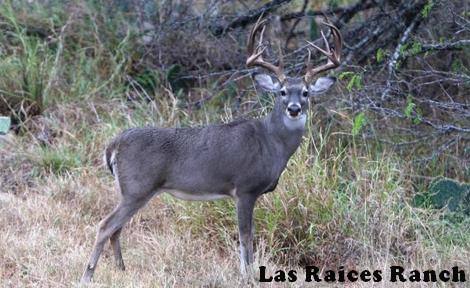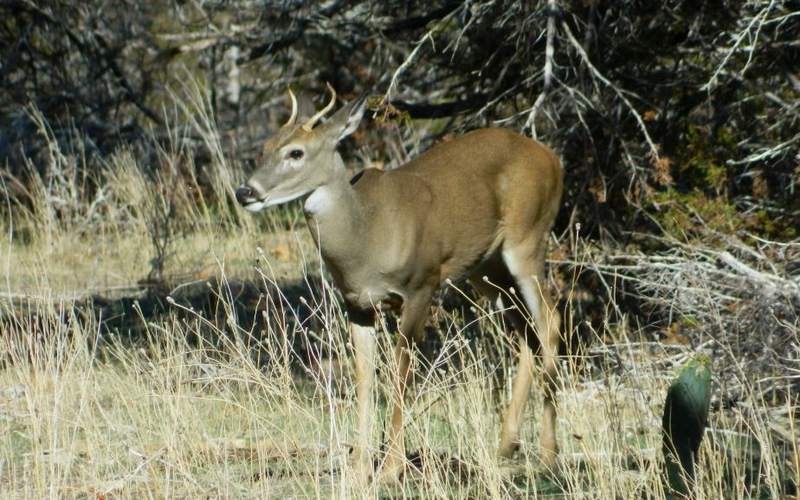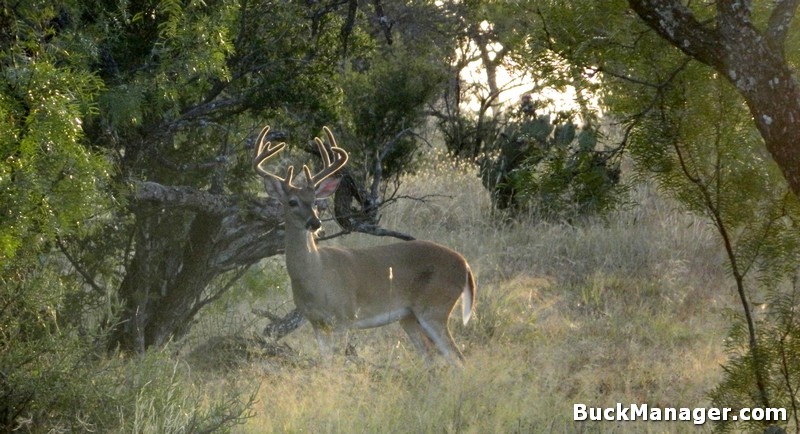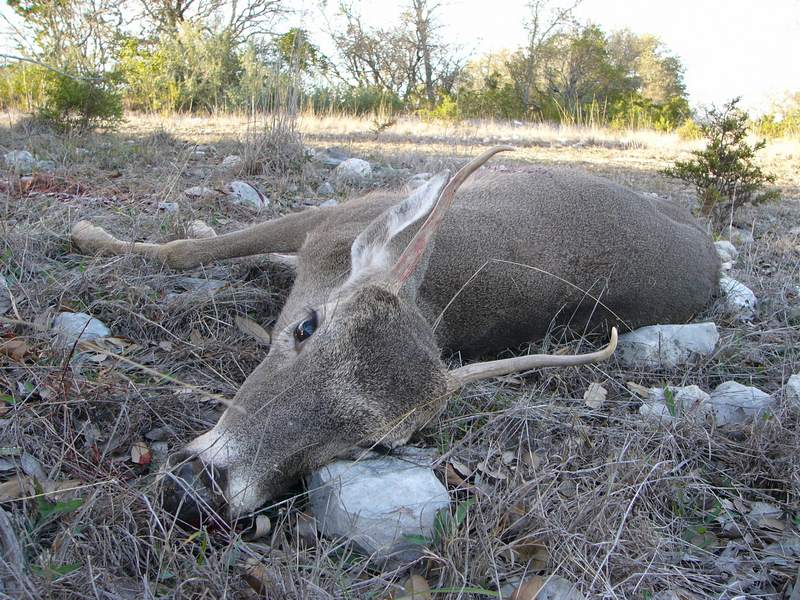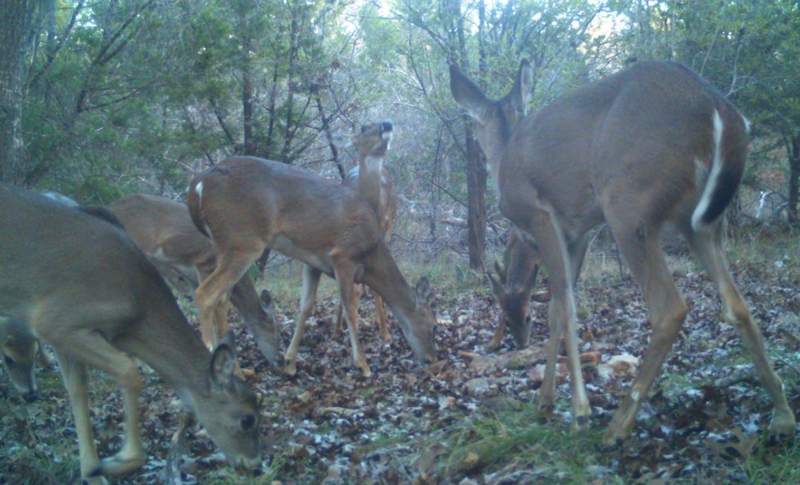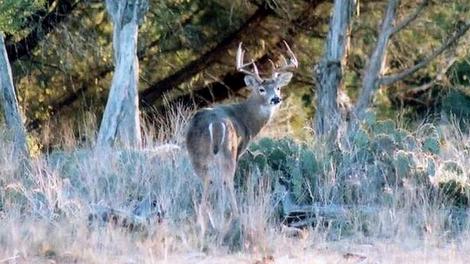Small Acreage Management Continued
Part one of this two part series on small acreage deer management discussed how selective harvest on properties less than 500 acres in size is difficult to control. Most deer in an area have home ranges that encompass neighboring ranches. The best remedy for combating the small acreage dilemma is to create cooperative, working with adjacent ranches to increase the quantity, and ideally quality, of land under a common white-tailed deer management program.
Increasing the reach of a small acreage management program is the first priority of any small landowner, or even large landowner for that matter. I also want to touch on the other important deer herd issues that were asked about in the first part of this series—estrus cycles, spikes, and buck to doe ratio.
Deer Management & Herd Parameters
First, with regard to the estrus cycles of deer, whitetail does cycle every 28 days. Late-born fawns result from does that cycle later than normal, or does bred on their second or third estrus cycle into the breeding season. Although born later than usual, late-born whitetail fawns are not genetically inferior to fawns born earlier in the fawning season.
In addition, research has shown that fawning date is not a factor in the antler production of yearling (1 1/2 year old) white-tailed bucks. Genes are genes and can not be changed, but antler production is influenced by environmental conditions. This circles back to the importance of managing for and maintaining high quality white-tailed deer habitat.
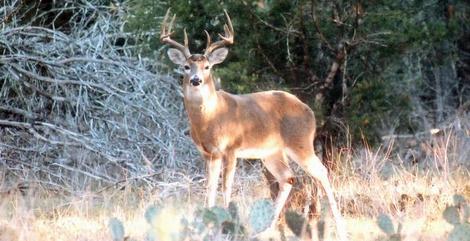
Buck Harvest on Small Tracts?
This brings us to the long-debated discussion about spike bucks. Some hunters believe spike must be harvested. Some are adamant that the protection of spike bucks is a necessity. There is no single, correct answer to this debate. The harvest approach depends on a specific deer population and the goals of the small acreage land manager. The thoughtful harvest of deer is important to be successful at managing deer and their habitat.
I mentioned that environmental conditions influence buck antler quality. This is true for all age classes, but some bucks in each age class will be better or poorer than average. Research has found that some yearling (1 1/2 year old) bucks on poor diets (simulating poor habitat conditions) still developed into 5, 6, 7, and 8-point deer. This is interesting from a research perspective. However, harvesting spikes will not change the genetic composition of a deer herd on a large or small property. Why? Females contribute at least on-half of the genes found in every fawn.
Furthermore, bucks must be allowed to age if the land manager’s goal is to grow and produce mature, quality bucks. That means not shooting bucks when they are young during the deer hunting season. There are situations when the harvest of spikes is warranted, however.
Deer Harvest is Essential
There is a time when shooting spikes is a good idea. It’s not a situation that all properties face. Reducing the overall deer population is important when the deer density of an area is extremely high, even on small acreages. Too few acres per deer leads to low quality habitat, smaller deer, smaller antlers and fewer fawns. Too many deer creates a nutritional stress in deer which leads to more 1 1/2 year old bucks showing up as spikes.
It’s a feedback loop that has to be broken. Too many total deer for the habitat means more (higher percentage) yearling spike bucks. In this situation, the selective harvest of bucks throughout the ag classes is recommended. This means shooting spikes on the yearling end so that those bucks with 5, 6, 7 and 8 points get to pass go. A high deer situation also means the selective harvest of does throughout the ag classes. Deer management is not just shooting bucks!
While we are on the topic, the study found that 95% of spike bucks are yearlings (1 1/2 years old). There is an occasional 2-year old spike out there, but old spikes are very, very rare.
More than Shooting Deer
I understand why managers tend to focus on buck harvest. Love it or hate it, let’s use the commercial deer breeding world as an example. Again, this is just an example. There is not a single deer breeder out there lining up to buy spike-antlered yearling bucks. Why? Because they, like you, know that antler characteristics are highly heritable. The difference is that deer breeding and movement is controlled within a pen.
White-tailed deer management on small acreage is different from management on large acreage. Wild deer move around a lot during the breeding season. There is a good chance that bucks spending a lot of time on your property do not breed the does that spend a lot of time on your property. Furthermore, does can get bred multiple times during an estrus cycle. They can have twin fawns with different sires.
Avoid High Grading Bucks
The standard operating procedure outside of a deer management program is for hunters to shoot the bucks with the most antler points. Under this scenario, these good bucks get harvested early and are not allowed to pass on their much-desired genetics. Under a managed scenario, high-quality young bucks should be protected for later harvest.
Only in high deer density situations should bucks with lower quality antlers be harvested. Again, the objective is not to change the genetics of the deer herd, only to reduce the deer herd and save some young bucks for later harvest. Most small acreage deer management programs will want to protect all young bucks.
Deer Management & Buck:Doe Ratio
I’ve covered t the importance of buck to doe ratio in the past, so review the article for more in-depth information. Buck to doe ratio is very important in determining fawning dates and small acreage managers should shoot for about a 1:2 buck to doe ratio. Larger and/or game-fenced properties can shoot for a more equal buck to doe ratio (1:1), but smaller ranches should carry a few more does than bucks.
In the case of a 1:10 buck to doe ratio, the number of bucks compared to the number of does is not likely not that bad. It’s difficult and rare to have a ratio that skewed. However, do collect deer survey data in late-summer and early-fall. Develop harvest recommendations based on those estimates based on the goals and objectives of the small acreage deer management program. Since it does sound like the land manager has many more does than bucks, it’s high time to trim down the female segment of the deer herd.
Removing excess does (and bucks) will improve fawning dates. The remaining female deer will get bred earlier, during the first estrus cycle. As a result, this will increase fawn survival by providing less competition and more summer food for nursing does. This works perfectly if the property is providing high quality deer habitat. Better fawn survival means more bucks in the future. Better habitat means bigger bucks and a healthy deer herd.

